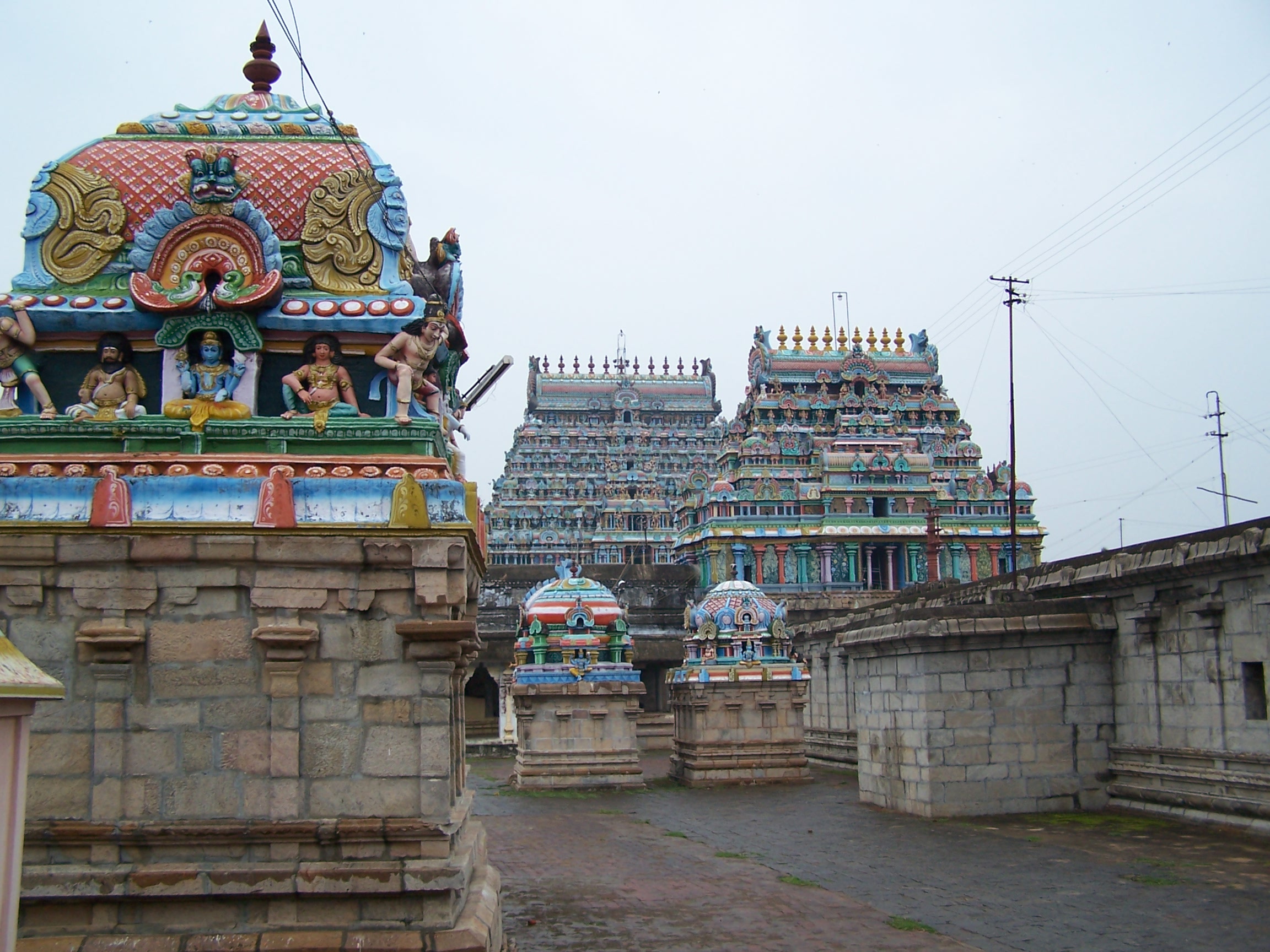The two main shrines of the temple are for vanmikinathar (Lord Siva) and
Thyagarajar. Of the two, the former is the most ancient, and derives its
name from tha anthill(putru), which takes the place of linga in the
main shrine.
The temples complex occupies an area of around 33 acres with the Kamalalayam tank to its west. There are numerous shrines andmandapas(halls) in the three spacious enclosures(prakaram).
Appar, the 7th-century poet saint, refers to the main deity in his hymn as puttritrukondan (one who resides in the ant hill). The Stala vriksham (temple tree) is patiri(trumpet flower tree).
The principles and practises of tree-worship and ophilotary are ancient bases whereupon a later date linga worship seems to have been established.
Here all the 9 Navagrahams located towards south in straight line also located in northwest corner of 1st (prakaram).
This temple hold the record of having maximum number of shrines (called sannithis in Tamil) in India.
Thyagarajar Temple is a Hindu temple dedicated to the deity Shiva, located in the town of Thiruvarur in Tamil Nadu,India. Shiva is worshiped as Moolanathar, and is represented by the lingam.
Daily poojas are offered to his idol referred to as Maragatha lingam. His consort Parvati is depicted as Kamalambigai.
The presiding deity is revered in the 7th century Tamil Saiva canonical work, the Tevaram, written by Tamil saint poets known as the nayanars and classified as Paadal Petra Sthalam.
The temple complex covers 30 acres, and is one of the largest in India. It houses four gateway towers known asgopurams. The tallest is the eastern tower, with four stories and a height of 30 metres (98 ft).
The temple has numerous shrines, with those of Thyagaragar (Veethi Vidangar) and Neelothbalambal (Alliyankothai) being the most prominent.
The temple has six daily rituals at various times from 5:30 a.m. to 10 p.m., and twelve yearly festivals on its calendar. The temple has the largest chariot in Tamil Nadu and the annual festival is celebrated during the month of April.
Do's:
- Do pray Your Ishta Devata before Pilgrimage to temple
- Do Contact Temple Devasthanam information centre for enquiry ,temple information and for pooja details etc.
- Do Do reserve yourtravel and accommodation at temple well in advance.
- Do bath and wear clean clothes before you enter the temple
- Do concentrate on God and Goddess inside the temple.
- DO maintain silence and recite your Istamantram to yourself inside the temple.
- Do observe ancient custom and traditions while in Temple.
- Do deposit your offerings in the hundi only
Don't s:
- Do not come to Temple for any Purpose other than worshipping of God and Goddess
- Do not smoke at Temple.
- Do not consume alcoholic drinks at Temple
- Do not Eat Non Vegetarian food in the Kshetram
- Do not approach mediators for quick Dharshanam. It may cause inconvenient to others
- Do not carry any weapon inside the temple
- Do not wear any head guards like helmets ,caps ,turbans and hats inside the temple premises
